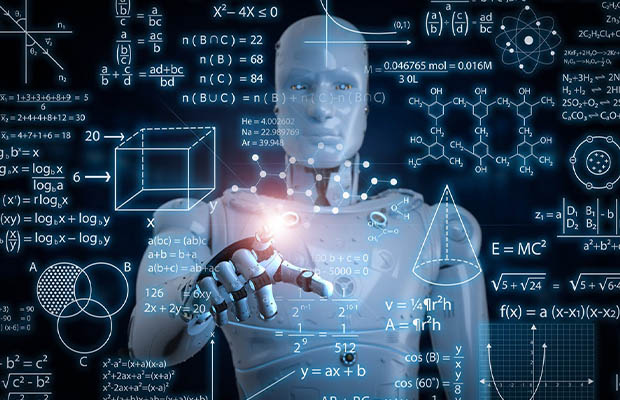Your introduction to the six main branches of artificial intelligence will be provided in this section of the manual.
Making computer systems and other machines mimic human behavior when performing tasks is the main goal of artificial intelligence in technology.
Artificial intelligence (AI) is the capacity of a machine or piece of computer hardware to imitate human intellect (cognitive process), learn from experiences, adapt to new information, and carry out tasks resembling those performed by humans.
Technology is clinging to us in every walk of our lives, keep reading and learn more about AI.
Table of Contents
What is Artificial Intelligence?
The science of creating systems with traits resembling the intelligence displayed in human behavior is known as artificial intelligence (AI). The study of system recognition, which includes learning, reasoning, language comprehension, and problem-solving behavior, is a significant area of computer science.
Stages of Artificial Intelligence
By their ability to mimic human characteristics, the technology they employ to do so, the applications they have in the real world, and the theory of mind, AI technologies are grouped. All artificial intelligence systems, both real and imagined, can be classified into one of three categories using these characteristics as a guide. Instead of the three types of artificial intelligence, these are the three stages through which it can advance.
- Artificial Narrow Intelligence (ANI), which has a narrow range of abilities
- Artificial General Intelligence (AGI), which is on par with human capabilities
- Artificial Super Intelligence (ASI), which is more capable than a human
6 Major Branches of Artificial Intelligence
Here are the major branches of Artificial Intelligence;
- Experts Systems
- Robotics
- Machine Learning
- Neural Network
- Fuzzy Logic
- Natural Language Processing
1. Expert Systems
Expert Systems are Artificial Intelligence (AI)-based programs that study and mimic human decision-making.
Expert Systems instead uses logical notations to solve complex problems rather than traditional programming to do so.
It is primarily utilized in the medical industry to run medical facilities and find virus infections. Analyzing loans and investments is another use for it in the banking industry.
2. Robotics
The design and creation of robots is the focus of this fascinating area of artificial intelligence. Robotics is the study of designing, building, and using robots by combining engineering and scientific methods.
Robots are used to assist humans with laborious and heavy tasks. These activities include the management of computer systems, the transformation of information, and the production of automobiles. NASA makes use of it to transport large objects into space.
Robots can also be thought of as artificial intelligence agents that carry out tasks in the real world with the intention of producing results. This area of AI is incredible.

3. Machine Learning
An extremely difficult area of artificial intelligence is machine learning. It is science that makes it possible for computer systems and other mechanical devices to process, analyze, and interpret data in order to find solutions to problems encountered in everyday life.
The level of sufficient data provided by machine learning allows computer systems to learn and act independently. The algorithm is set up so that computers can forecast outcomes based on previous events.
Machine learning algorithms and techniques assist in training a model with the data that is then used to predict and adjust for future outcomes. It is the science of letting computers pick up new information and translate it so they can carry out tasks automatically. Machine learning has led to the development of technologies like web search, speech recognition, and automated vehicles.
Here are three major categories under Machine Learning;
- Supervised Learning
- Unsupervised Learning
- Reinforcement Learning
4. Neural Network
The neural network is a subfield of artificial intelligence that uses neurology, a branch of biology that deals with the nerve and nervous system of the human brain, as well as cognitive science and machines to carry out tasks. The purpose of a neural network is to encode brain-neurons into a system or machine, just as the human brain contains an infinite number of neurons.
A neural network, to put it simply, is a collection of algorithms that are used to discover fundamental connections among groups of data using a method that mimics the way the human brain works.
Thus, a neural network is a system of neurons that can be either natural or artificial. Artificial neurons are known as perceptrons, and we can therefore deduce the neural network’s full perceptron model from this.
A neuron in a neural network is a mathematical function (like an activation function) whose job it is to gather and classify data according to a specific structure. The network heavily employs different statistical methods, like regression analysis, to complete tasks.
They are widely used for everything from forecasting to market research, including fraud detection, risk analysis, stock-exchange prediction, sales prediction, and many more.
5. Fuzzy Logic
By evaluating the likelihood that the hypothesis is correct, this area of AI uses a technique to modify and represent uncertain information. When dealing with uncertainties, fuzzy logic can provide some level of reasoning flexibility.
It may sound a little complicated, but all that is required to determine whether a concept exhibits some degree of truth is to apply standard logic. As an illustration, according to standard logic, a concept is TRUE if it has a value of 1.0 and FALSE if it has a value of 0.0. A concept may, however, occasionally be only partially true or partially false.
A computer system can be programmed to experience difficulties in order to find solutions, just as people do in their daily lives.
Automatic transmissions and the decision-making process in medicine both use fuzzy logic.
6. Natural Language Processing
It can be very difficult to communicate with someone who doesn’t speak your language, and the same is true when people try to interact with a computer system. Due to the fact that it only comprehends binary digits, a computer will have a hard time understanding words. Natural Language Processing in computer science has evolved as a result of this problem.
Simply put, this is the process of teaching machines and computer systems to comprehend fundamental human interactions. In order to make human speech easily readable and understandable, this process involves a machine taking human sound from interaction and converting it to text format. The computer system then transforms these texts into parts that will enable it to comprehend human intention.
Conclusion
You can explore the quite fascinating field of specialization known as artificial intelligence. You can specialize in any one of these six main areas of artificial intelligence.
We have looked at six subfields of artificial intelligence, which fall under its general heading of “artificial intelligence,” depending on how the systems work. The six fields are currently being discussed extensively in businesses and organizations. Many businesses are promoting it in order to use it and better serve the public.
Read More:




